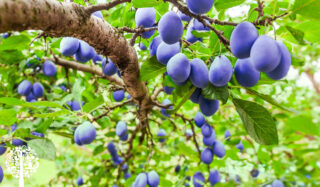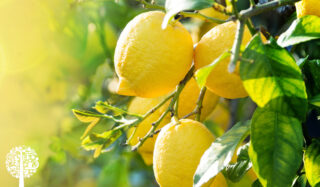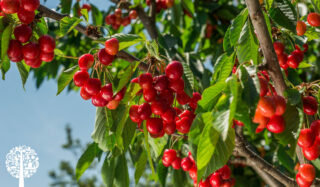5 Fruit Trees For Your Garden
When it comes to food these days, everyone is talking about buying local. And while a farmer’s market is often a great place to pick fresh, locally grown fruit, imagine if you were the farmer’s market; if you could step outside and pick it right off the tree. Is there anything better than that? So, with that in mind, here are five relatively low-maintenance fruit trees you might be able to grow yourself.
Plum

Plum trees are a great option because they can deal with various climate conditions well. And once planted and settled in, they tend to require less maintenance than most other fruit tree options. You’ll want to grow them in an area that receives good sun throughout the day but, if possible, is also somewhat sheltered from the wind. Plum trees are usually not self-pollinating, so you’ll also need to plant at least two about 15-25 feet apart, depending on the variety. The climate where you live will determine the best variety for you.
Apple
Making an apple pie using the apples you picked from your tree sounds like a dream. And that dream can come true should you live in hardiness zones 3 through 9. If you don’t know your zone, it’s easy to find. And once you do, you’ll also be able to determine which apple varieties are best suited for your region (your local nursery should also be able to answer all those questions). Even though some types are self-fertile, it is generally recommended to plant multiple trees for the cross-pollinating benefits. Establishing apple trees does take a little work, but once they’re set, maintenance is pretty minimal.
Lemon

If you live in a colder climate, you might have just assumed that lemon trees weren’t an option. But, before you get all sour about it, allow me to be the bearer of some good news. Lemon trees are best suited for zones 9 to 11, but those of us in cooler areas can grow the trees at home – although it’s advised to do so in a large pot so you can bring them inside when the nights start to get cold. More silver lining when it comes to the colder weather is that it tends to mitigate the growth of the trees – meaning they can live in those large pots for quite some time.
Cherry

Who doesn’t want to grow their own cherry tree? If for no other reason than to be able to make your own sundae and put your own cherry on top. And the good news is that many of us can, as this oh-so-delicious fruit can thrive in several climates. Look at it this way; 97% of the sweet cherries grown in the United States come from Washington, Oregon, and California. Not exactly three places with the same weather reports. And taking it a step further – and colder – Michigan has the highest production of tart cherries. Of the two, the tart ones are the easiest to grow, but sweet is doable. It seems like the biggest hurdle to growing cherry trees might be the birds. However, with some netting when the cherries appear, you can keep the feathered flyers away from your delicious fruit. And when not fruiting, the flowering trees are a beautiful addition to any garden or landscape.
Peach
Atlanta, Georgia, has 71 different streets featuring some version of the name ‘Peachtree.’ But Just because Justin Beiber gets his peaches out in Georgia, that doesn’t mean we can’t grow our own if we reside in a climate that differs from that in Hot-lanta. Just head north, and you’ll find that Ontario produces 80% of Canadian peaches – and nobody calls it Hot-Tario. As long as your winter temps don’t fall below -20°C, you should be good to go with planting a peach tree. You’ll need well-drained soil and multiple plants for cross-pollinating. There are also regular and dwarf sizes, so you can choose what works best for you, depending on the available space.




